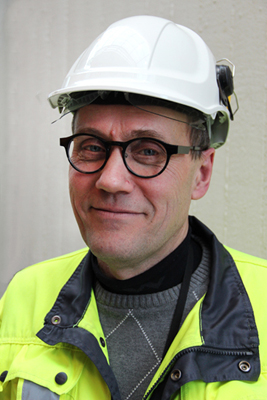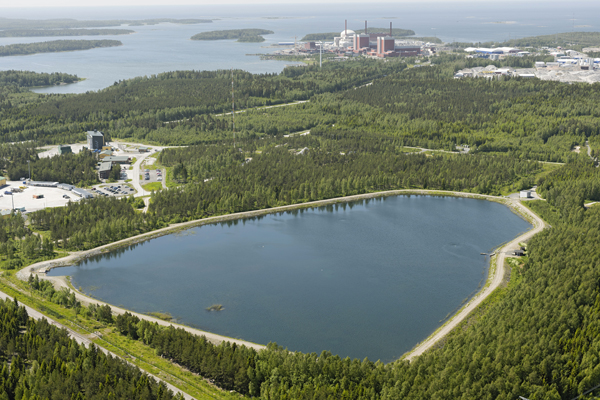The many phases of the water cycle
Water is one of the key elements in the operation of a nuclear power plant. Water is used to convert heat via mechanical force into electricity. With a water treatment plant and large water storages of its own, a nuclear power plant has always suitable water available to it, whenever it is needed.
At the Olkiluoto nuclear power plant, raw water is needed in the production of process water for the power plant, as drinking water and household water for the personnel, as fire water and for the cleaning of the power plant and its equipment. The raw water used comes from River Eurajoki: the river water is pumped into the Korvensuo reservoir excavated on the island of Olkiluoto. The volume of the reservoir is 140 000 cubic metres.
Production of clean water
Planning technician Pekka Simula from TVO is familiar with the water cycle down to every detail. Having worked with water for  soon 40 years, he knows what water treatment requires in Olkiluoto. – Several actions and phases are need to make the water taken from River Eurajoki usable. The chemical pre-treatment of the water takes place already at the Korvensuo reservoir, in two parallel sand filters. After that the water is pumped to the water treatment plant on the plant site, where it goes through a chemical purification process based on active carbon filters. Finally the water is stored in clean water pools which have a total volume of 5 000 cubic metres. The water stored in these pools is also used as a fire water storage.
soon 40 years, he knows what water treatment requires in Olkiluoto. – Several actions and phases are need to make the water taken from River Eurajoki usable. The chemical pre-treatment of the water takes place already at the Korvensuo reservoir, in two parallel sand filters. After that the water is pumped to the water treatment plant on the plant site, where it goes through a chemical purification process based on active carbon filters. Finally the water is stored in clean water pools which have a total volume of 5 000 cubic metres. The water stored in these pools is also used as a fire water storage.
The water is further divided into household water and process water. For use as household water, the water is disinfected and its pH is increased to the right level.
Process water usage
The demineralised water used in the production process of the nuclear power plant is produced at the demineralisation plant. In demineralisation, the conductivity of water is decreased to the minimum by filtration. – The conductivity of demineralised water is 0.5-1 micro-Siemens per centimetre (µS/cm), while the conductivity of normal drinking water is 200–300 µS/cm. Before the process water is transferred to the storage, it also undergoes a reverse osmosis to remove total organic carbon from it. This process removes corrosion-inducing substances from the water.
A total of ca. 37 000 cubic metres of water is used every year in the production processes of the OL1 and OL2 plant units. – That is a small figure for an industrial plant. We have managed to reduce the consumption of water to about half of the initial consumption. The internal water recirculation cycle of the plant units is efficient.
At a boiling water plant, no chemicals are used in the primary reactor circuit; this is referred to as normal water chemistry. The cleanness of the reactor water affects the reliability of reactor operation.
Waste water management
The process water is cleaned at the waste processing plant located on the power plant site. – We use filters which further reduce the electrical conductivity of the water. After the treatment process, water is pumped to the storage pool for a new recirculation cycle.
Every week some 50–100 cubic metres of water is removed for good from the internal recirculation cycle of the process at the plant units. This water is cleaned either by evaporation, filtration or separation. The water is finally pumped into a pump-out tank from which it will ultimately be discharged through the outlet channel to the sea. – We take samples of the water before it is discharged to the sea. All the samples are analysed in the laboratory. Tight limit values have been specified for the water to be released to the environment.
TVO also operates its own sanitary and waste water treatment plant. – The water used at our own laundry is also treated here on the plant site. We are committed to responsible operation and our goal is to make the water as clean as possible with existing technology. We also pay special attention to the consumption of water at each phase, Mr. Simula concludes.
Korvensuo reservoir
Share